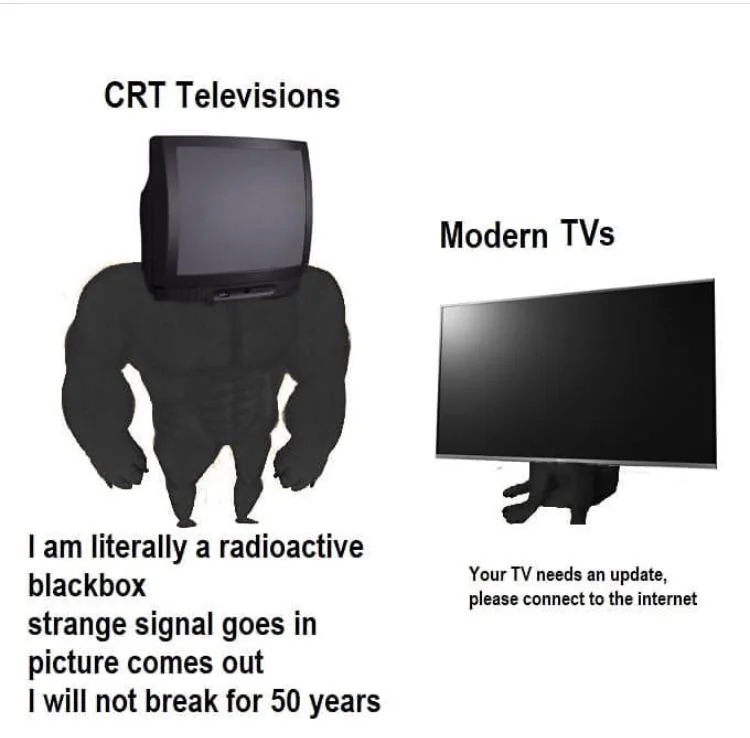this post was submitted on 27 Nov 2023
836 points (95.4% liked)
Memes
8319 readers
969 users here now
Post memes here.
A meme is an idea, behavior, or style that spreads by means of imitation from person to person within a culture and often carries symbolic meaning representing a particular phenomenon or theme.
An Internet meme or meme, is a cultural item that is spread via the Internet, often through social media platforms. The name is by the concept of memes proposed by Richard Dawkins in 1972. Internet memes can take various forms, such as images, videos, GIFs, and various other viral sensations.
- Wait at least 2 months before reposting
- No explicitly political content (about political figures, political events, elections and so on), [email protected] can be better place for that
- Use NSFW marking accordingly
Laittakaa meemejä tänne.
- Odota ainakin 2 kuukautta ennen meemin postaamista uudelleen
- Ei selkeän poliittista sisältöä (poliitikoista, poliittisista tapahtumista, vaaleista jne) parempi paikka esim. [email protected]
- Merkitse K18-sisältö tarpeen mukaan
founded 2 years ago
MODERATORS
you are viewing a single comment's thread
view the rest of the comments
view the rest of the comments


Are you serious?
[This comment has been deleted by an automated system]
Sometimes I think about how some technologies could have evolved if they didn't get out of fashion. I always thought it's a bit unfair to compare products made decades ago with new ones and use it as a comparison for the whole technology.
In the case of crts, it would be totally possible to make them with modern aspect ratio and resolutions. The greatest challenges would probably be size, weight and power consumption.
For TVs, that's just because they didn't need any more resolution because the signal they were displaying was 480i (or even worse, in the case of things like really old computers/video game consoles).
My circa-2000 19" CRT computer monitor, on the other hand, could do a resolution that's still higher than what most similarly-sized desktop flat screen monitors can manage (it was either QXGA [2048x1536] or QSXGA [2560x2048], I forget which).
And then, of course, there were specialized CRT displays like oscilloscopes and vector displays that actually drew with the electron beam and therefore had infinite "resolution."
Point is, the low resolution was not an inherent limitation of CRT technology.